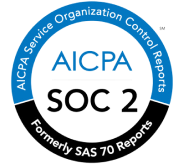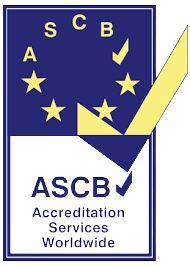Table of Content
- Introduction
- 6 Key Components of an HR Strategy Roadmap
- Importance of an HR Strategy Roadmap
- How to Form an HR Strategy Roadmap?
- 1. Understand the Business Strategy
- 2. Conduct an HR Audit
- 3. Identify Strategic HR Priorities
- 4. Develop Initiatives and Action Plans
- 5. Set a Timeline and Milestones
- 6. Establish KPIs
- 7. Communicate the Roadmap
- 8. Monitor and Adjust
- Conclusion
- FAQs on HR Strategy Roadmap: What is it? How to Form it?
- How do I start forming an HR Strategy Roadmap?
- What should be included in an HR audit?
- How do I identify strategic HR priorities?
Introduction
In a modern and dynamic work environment, the Human Resources (HR) function is no longer restricted to administrative tasks. It has developed into a strategic partner essential for operating business success.
One of the most effective tools HR can hold is the HR strategy roadmap. This roadmap acts as a guiding framework that aligns HR initiatives with the organisation's overall business objectives.

What is an HR Strategy Roadmap?
An HR strategy roadmap is a comprehensive plan that configures the strategic management of the HR function in an organisation. It serves as a blueprint, detailed initiatives, goals, and actions that HR will streamline to support the company’s inclusive objectives.
This roadmap is a detailed guide that covers various aspects of HR, including:
- Talent management
- Employee engagement
- Learning and development
- Work culture
6 Key Components of an HR Strategy Roadmap
- Vision and Mission Alignment:
The roadmap ensures that HR initiatives are in sync with the company’s vision and mission. This alignment is important because HR strategies should contribute to the overall business strategy rather than work in isolation.
- Strategic Priorities:
It determines the critical areas where HR needs to focus on. These priorities may include talent acquisition, employee engagement, leadership development, diversity and inclusion, and workforce planning.
- Actionable Initiatives:
Each priority is then broken down into specific initiatives to measure and take actions accordingly. These initiatives should have clear objectives, defined roles and responsibilities, and a timeline for execution.
In fact, a PMS module can help HRs to formulate their KRAs or objectives. Using a project management tool, they can keep track of these initiatives at once.
- Resource Allocation:
The roadmap manages how resources like budget, personnel, and technology will be allocated to support the initiatives. Effective resource allocation ensures that HR has the necessary tools to achieve its goals.
- Timeline and Milestones:
It includes a timeline that outlines when each initiative will be implemented. Milestones are also set to track progress and ensure that the roadmap stays on course.
An HRMS like uKnowva helps to track each employees’ utilisation rate to make the best use of their billable hours. Such a timesheet module integrates easily with leaves, payroll, and project management when using our software.
- Performance Metrics:
The roadmap establishes Key Performance Indicators (KPIs) to measure the success of HR initiatives. These standards help in assessing whether the initiatives are delivering the desired outcomes.
Importance of an HR Strategy Roadmap
An HR strategy roadmap ensures that HR initiatives are directly linked to the company’s overall goals. This structure enables HR to contribute to the overall success of the business rather than solely managing day-to-day operations.
Identifying priorities that enable a roadmap to help HR to focus its efforts on areas that will have a significant impact on the organisation. This focus ensures that HR resources are used efficiently and effectively.
Read about more important factors below:
- Active Management:
The roadmap helps HR to foresee future challenges and opportunities, making them actively manage the tasks to go beyond expected results. This progressive approach is critical in a vigorous business environment.
- Measurement and Accountability:
With well defined KPIs, the roadmap provides a structure to measure the success of HR initiatives. This measurement builds accountability and ensures that HR is providing value to the organisation.
- Enhanced Communication:
A well-constructed HR strategy roadmap facilitates communication between HR and other departments. It ensures that all stakeholders understand HR’s role in achieving the company’s objectives and how they can support HR in this endeavour.
How to Form an HR Strategy Roadmap?
Creating an HR strategy roadmap requires a structured approach that involves understanding the business strategy, assessing the current scenarios of HR, identifying strategic tasks, and developing actionable initiatives.
Below is a step-by-step guide to form an effective roadmap for HR professionals. Read at your pace for key learnings.
1. Understand the Business Strategy
The first step in forming an HR strategy roadmap is to gain a deep understanding of the company’s business strategy. This involves:
- Engaging with Seniors:
HR leaders should interact with senior executives to understand the company’s vision, mission, and long-term goals. This engagement helps HR leaders to streamline their strategies with the broader business objectives.
- Identifying Business Challenges:
Understanding the challenges the business faces, such as market competition, technological changes, or workforce demographics. HR strategies should address these challenges to support business success.
- Defining HR’s Role in Business Strategy:
HR should clearly define its role in supporting the business strategy. This involves:
- Improving brand image to attract the best talent out there.
- Developing leadership and involving in succession planning.
- Fostering a culture that aligns with the company’s values.
2. Conduct an HR Audit
Once the business strategy is understood, the next step is to assess the current state of HR. This involves conducting an HR audit to identify strengths, weaknesses, opportunities, and threats (SWOT analysis). The HR audit should include:
- Current HR Policies and Processes: Review existing HR policies and procedures to identify areas that need improvement or updating.
- Technology and Tools: Evaluate the current HR technology funnel to ensure it supports the organisation’s needs. Identify gaps where new tools or systems may be required.
- Workforce Analysis: Analyse the current workforce in terms of skills, demographics, and performance. This helps in identifying talent gaps and areas for development.
- Employee Feedback: Collect real-time feedback from employees to understand their perceptions of HR and the workplace. This feedback will shape further HR initiatives to continuously improve employee satisfaction and engagement.
3. Identify Strategic HR Priorities
Based on the business strategy and the findings from the HR audit, the next step is to identify the strategic HR priorities. These priorities should be:
- Aligned with Business Objectives: Ensure that each priority is supporting the company’s strategic goals directly.
- Impactful: Focus on areas where HR can have the most significant impact on the organisation’s success.
- Feasible: Consider the resources available and ensure that the identified priorities are realistic and achievable.
- Talent Acquisition and Retention: Attracting and retaining the best hire that is culture fit and add must be a top priority. This may involve enhancing the skills-based hiring process, improving the employer brand, and developing retention strategies.
- Employee Engagement: Fostering an interactive workplace with equally enhancing engagement activities on the go often leads to higher productivity and lower turnover rates.
- Diversity and Inclusion: Promoting DEI at an organisation is a social responsibility and considered as a critical task for new-age businesses.
4. Develop Initiatives and Action Plans
With strategic priorities identified, the next step is to develop specific initiatives and action plans. Each initiative should include:
- Clear Objectives: Define the goals of the initiative. What does success look like for an HR professional or leader in the organisation?
- Actionable Steps: Break down the initiative into strategic and systematic actions for the HR team.
- Assigned Responsibilities: Assign responsibilities to specific individuals or teams. Ensure that everyone knows their role in executing the initiative.
- Resource Allocation: Regulate the resources needed like budget, personnel, and technology. Ensure that these resources are available and allocated effectively.
5. Set a Timeline and Milestones
A timeline is essential for ensuring that the HR strategy roadmap stays on track. This should include:
- Start and End Dates: Clearly define when each initiative will start and when it is expected to be completed.
- Milestones: Set milestones that help identify the roadmap to deliver transparently with areas to improve along the way. These milestones track progress and help in taking the initiative forward towards the end goal.
6. Establish KPIs
When establishing KPIs, consider the following:
- Ensure that the KPIs are relevant to the current and the next business goals.
- KPIs should be quantifiable and based on traceable and trackable data sets.
- KPIs should provide insights to applied improvements or adjustments to the strategic roadmap for the HR.
7. Communicate the Roadmap
Effective communication makes an HR strategic roadmap a success when you share relevant and required information with all stakeholders, including:
- HR Team Members
- Senior Leadership
- Associated Departments
Leverage social intranet to ensure that the roadmap is understood and embraced by all stakeholders.
8. Monitor and Adjust
The last step in creating an HR strategy roadmap is to monitor the progress continuously and make adjustments as and when needed. This involves:
- Regular Feedbacks: Collect regular feedback to evaluate the progress of each task. Use KPIs to assess that the initiatives are functioning smoothly to achieve their objectives.
- Flexibility: Be prepared to adjust the roadmap according to diverse business needs or sudden challenges. Flexibility is essential for ensuring that the roadmap remains relevant and effective.
Conclusion
An HR strategy roadmap is a vital tool for aligning HR activities with an organisation’s current and upcoming business objectives. By using a structured approach to forming this roadmap, HR can become a strategic partner that drives business success.
Connect to uKnowa HRMS as it is an intelligent and cost-effective HR tool that helps in creating relevant roadmaps and strategies for HR. It helps achieve short as well as long term goals for any growing business in and outside India.
With integrated features like PMS, project and timesheet management, and more, HR can measure, align, and improve their initiatives.
FAQs on HR Strategy Roadmap: What is it? How to Form it?
How do I start forming an HR Strategy Roadmap?
Start by understanding the company’s business strategy. Engage with senior leadership to grasp the company's vision, mission, and goals. Identify how HR can support these objectives.
Next, conduct an HR audit to assess the current state of HR, including policies, processes, technology, and workforce analysis. Use this information to identify strategic HR priorities that align with the business strategy.
What should be included in an HR audit?
An HR audit should include a review of:
- Current HR Policies and Processes: Assessing their effectiveness and identifying areas for improvement.
- Technology and Tools: Evaluating the current HR technology stack and identifying gaps.
- Workforce Analysis: Analysing the workforce in terms of skills, demographics, and performance.
- Employee Feedback: Gathering insights from employees to understand their perceptions and identify areas for improvement.
How do I identify strategic HR priorities?
Identify strategic HR priorities by analysing the business strategy and the results of your HR audit.
Focus on areas where HR can have the most significant impact, such as talent acquisition, employee engagement, leadership development, or diversity and inclusion.
Ensure that these priorities are aligned with the company’s broader business goals and are feasible given the available resources.












